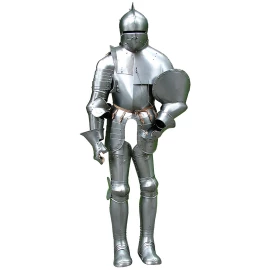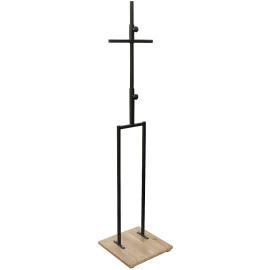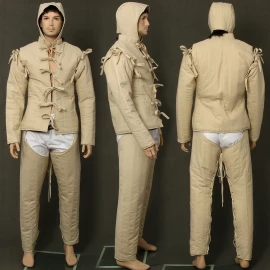Maxmilian armour
2xMaximilian armour is a modern term applied to the style of early 16th century German plate armour apparently first made for the Emperor Maximilian I. The armour is characterized by armets and close helmets with bellows visors, small fan-shaped narrow and parallel fluting often covering most of the harness (but never the greaves), etching, work taken from woodcuts and sharply waisted cuirasses and squared sabatons. More information...
Maxmilian armour
According to an alternative version the name is related with Maximilian II as the last Maximilian Armour was made especially for him in 1557 - 17 years after it passed out of use (according to Liliane Funcken & Fred Funcken it passed out of use in 1540, but the last one was made for Maximilian II).
The armour itself was designed to imitate the pleated clothing that was considered fashionable in Europe at the time. This was a trend that was developing in 15th century Europe of creating armour that not only provided the maximum amount of protection, but was also visually pleasing. It combined the rounded Italian style of rounded armour production with the German fluted style.
At the beginning of XVI century a unique style of armours has been developed in the area corresponding with current states of southern Germany, Austria and northern Italy (South Tyrol).
This kind of armours was named “Maximilian” to the tribute of the Emperor of the Holy Roman Empire who reigned at that time. These armours represent the synthesis of the (1) late gothic German style with its typical angular decorations, pointed sabatons and (2) fluted gauntlets connected with Italian rounded and plastic shapes of the late XV century.
The early specimen were more rounded and plain with limited decorations on the breastplate in shell-like-ripples form, as the style evolved in a more daring way. Almost the complete armour was decorated in such a way (by flutes), first in limited groups – later spread all over the whole suit.
An interesting singularity is to note: the flutes on the steel were just the equivalent of civilian dresses, especially doublets, cinched by a waist belt.
This style is very recognized not only for its shapes, but also for the additional strength added by the flutes to all the armour's parts, which was seldom seen outside these lands. It declined after a few years, as it was very laborious and time consuming to forge armours and to decorate them by hammering all the flutes from inside, so, from the half of that century, all the defensive pieces changed their shape to a plainer form.
The Maximilian armours were typical for higher ranks of Landsknecht officers. Our marvellous reproductions capture perfectly the shapes of these famous and renowned armours with plenty of quality details, from the work of the steel plates to the beautiful flutes spread all over its surface; this is an armour perfectly suitable not only as decoration but also for serious use of reenactors. All its parts are perfectly working as they used to in the history. It is an masterpiece you can be proud of !
This "Maxmilian armour" will be made to measure to your exact size. To submit us your measurements, please use the following measurement chart.
We are here for you


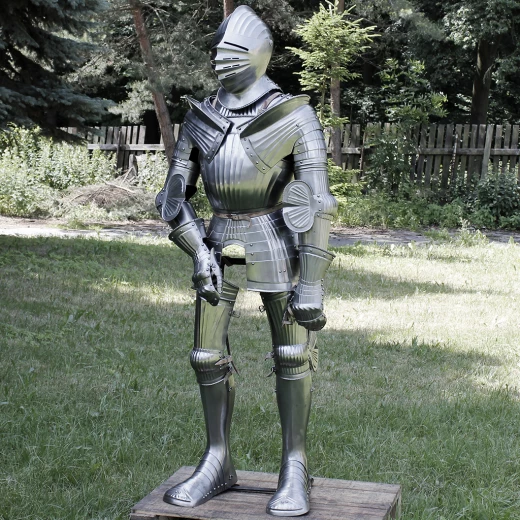





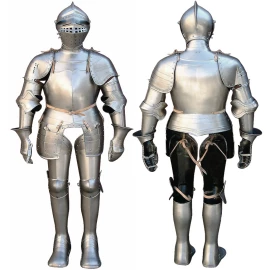
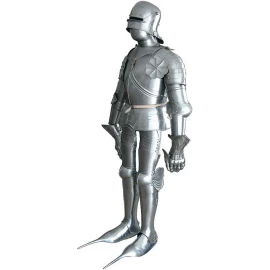
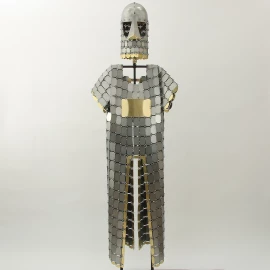
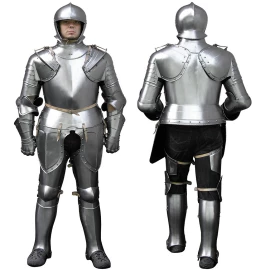

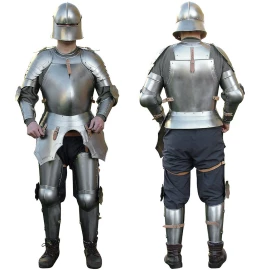
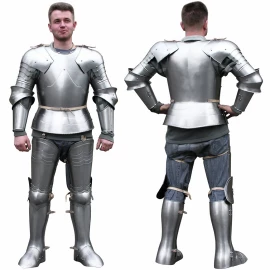


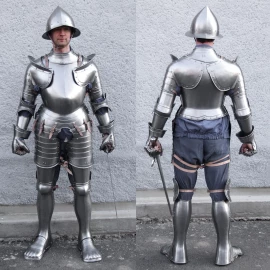
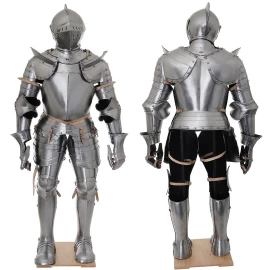
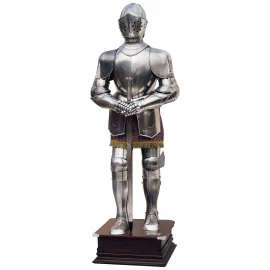
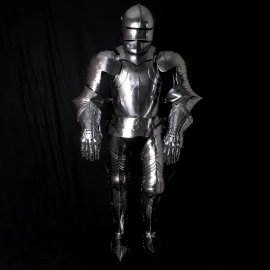
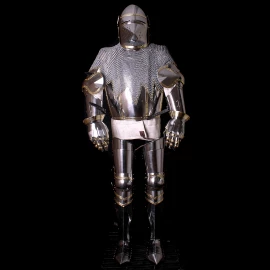
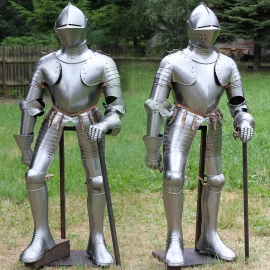
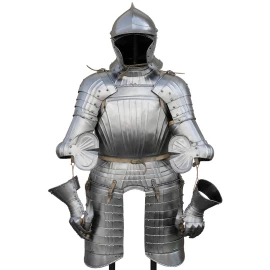
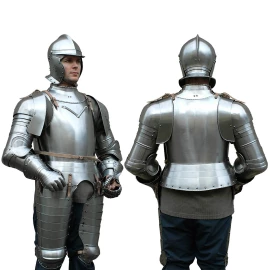
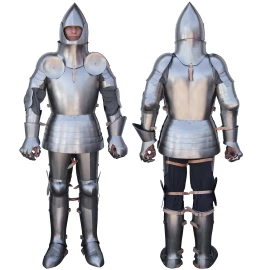
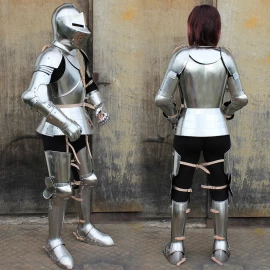
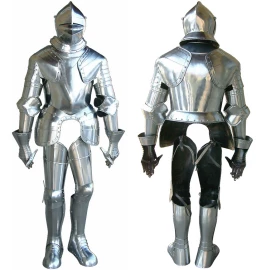
.2152382459.1696366006.jpg.webp)
